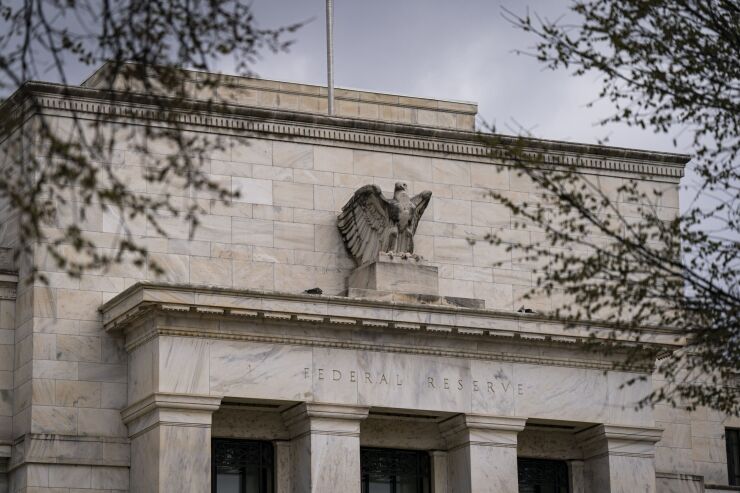
WASHINGTON — After the
In the Federal Reserve's latest financial stability report published Monday afternoon, the bank failures, which now count Silicon Valley Bank, Signature Bank and First Republic, were a new top concern for financial market participants, compared to the Fed's most recent report in November. Persistent inflation, along with the monetary tightening that goes along with the Fed trying to control that inflation, and U.S.-China tensions also earned top mentions from the broker-dealers, investment funds, research and advisory organizations, and academics surveyed by the New York Fed. All three categories garnered mentions from 56% of respondents.
Fifty-two percent of respondents highlighted commercial and residential real estate debt.
Despite intervention by federal regulators to guarantee the uninsured deposits of Silicon Valley Bank and Signature Bank after the two institutions' failures, concerns about economic outlook, credit quality and funding liquidity could still prompt other banks and financial institutions to further restrict the supply of credit to the economy, according to the report.
"A sharp contraction in the availability of credit would drive up the cost of funding for businesses and households, potentially resulting in a slowdown in economic activity," the Fed said in the report.

A key feature of those bank failures —
"Notwithstanding the banking stress in March, high levels of capital and moderate interest rate risk exposures mean that a large majority of banks are resilient to potential strains from higher interest rates," the Fed said in its report.
Rising interest rates can affect banks in multiple ways.
"Higher interest rates on floating-rate and newly acquired fixed-rate assets lead to higher interest income for banks," according to the report. "The costs of bank funding also increase, but generally much more slowly than market rates. As a result, the net interest margins of most banks typically increase in a rising rate environment as the rates they receive on their assets outpace their funding costs."
Those higher funding costs, however, could pressure the profitability of banks with large portfolios of fixed-rate assets that were acquired when interest rates were much lower, the Fed said in the report.
In
"The shift toward telework in many industries has dramatically reduced demand for office space, which could lead to a correction in the values of office buildings and downtown retail properties that largely depend on office workers," the Fed said in its report. "Moreover, the rise in interest rates over the past year increases the risk that CRE mortgage borrowers will not be able to refinance their loans when the loans reach the end of their term."
The Fed suggested in its report that although commercial real estate is a vulnerability and prices have declined, valuations remained high. Losses on CRE loans will depend on leverage, because owners of buildings with substantial cushions are less likely to default, the Fed said.
"In response to concerns about CRE, the Federal Reserve has increased monitoring of the performance of CRE loans and expanded examination procedures for banks with significant CRE concentration risk," according to the report.




